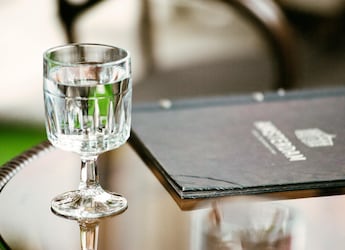After a sojourn in Hawaii, the macadamia nut is back home and thriving.
It's curious that the first native Australian food plant to be cultivated was, for many years, thought to be Hawaiian. Curiouser still that even today, the macadamia nut might be the only native food that many Australians have ever eaten. Despite being a food prized by Indigenous Australians for thousands of years, the macadamia was only "discovered" by English botanist Alan Cunningham in 1828, named (after Australian scientist Dr John Macadam) in 1857 and first planted commercially near Lismore in 1882, a year after seeds were first sent to Hawaii. They flourished in the Hawaiian environment and the first macadamia processing plant ever built began operating in Kakaako on the southern shores of the island of Oahu: you need tough machinery to crack the tough shell. And macadamias might have remained Hawaiian save for an upsurge in tax minimisation schemes involving macadamia farms in the 1980s.
But, as successful macadamia farmer Pamela Brook argues: "If a tax dodge is too good, it starts making a profit. And while a lot of initial investment started that way, the industry actually grew, farms became bigger and now it's a strong sustainable industry." Pamela and Martin Brook run
Brookfarm which is both a large 4,500-tree macadamia farm near Byron Bay and a processing plant using the nut in a variety of breakfast and snack products and producing macadamia oil. "We bought it as a rundown dairy farm in 1989," says Pamela, "and immediately got a weeds notice from the council. It was overrun with camphor laurel and lantana. We started planting macadamia trees on the slopes, and rainforest trees and eucalypts on the land that was too steep for macadamias." Eventually, they'd planted over 30,000 trees, and have regenerated the rainforest which is a haven for local wildlife. But not rats, which love to eat macadamia nuts. The rainforest is home to several pairs of breeding owls; one breeding pair will eat up to 1,500 rats and mice a year. Martin Brook points out that the macadamia industry is one of the leading horticultural industries in the use of biological methods to control all sorts of pest and bugs.
"To control [nut borers] we use about 40,000 Trichogramma wasps a year," he says. Last year the farm was granted organic certification. From the outset, the Brooks have value-added their produce. "Lots of producers were selling macadamias overseas for other people to do clever things with them. We wanted to bring them into the everyday diet." And a big part of that plan has been their pioneering of macadamia oil. "When we started it was seen as a byproduct," Pamela says. "Only the second-grade nuts were used to make oil. We decided to use only the finest quality nuts for pressing. You get great olive oil from using the best olives, the same with macadamia oil." Another curious thing about that long holiday in Hawaii is that the trees came back stronger. The Brooks use a grafted Hawaiian variety of tree that's better at resisting local pests. So even though the macadamia came home - and Australia is once again the world's largest producer - it's still a little bit Hawaiian.
Recipe created by Pamela and Eddie Brook: Scallops with fennel in a lemon myrtle vinaigrette
Serves 4
Ingredients 1 tablespoon butter 16 scallops - leave or remove the roe according to your taste.
1 knob fennel, finely shaved 1 dessertspoon finely chopped fennel leaves 1 heaped teaspoon Dijon mustard 1/4 cup white balsamic vinegar 1/4 cup Brookfarm lemon myrtle infused macadamia oil 1/4 cup natural macadamia oil Salt and pepper to taste
Method Put the finely sliced fennel and its chopped leaves in a bowl. In a separate cup add the lemon myrtle oil, balsamic and mustard. Add salt and pepper to taste, then shake vigorously until a smooth, even mix. Pour the dressing over the sliced fennel and season. Next, lightly season the scallops with salt and pepper. Put a heavy frypan onto a high heat and add the macadamia oil and butter. Sear the scallops to a light brown on each side (approx. 1min per side) so just cooked through. Place them onto shells and add a drizzle of the brown butter/macadamia oil from the pan. Scatter the dressed, shaved fennel over the scallops and serve.
Macadamias: Nutty for this delicious Australian treat Photograph: Rae Allen /Flickr